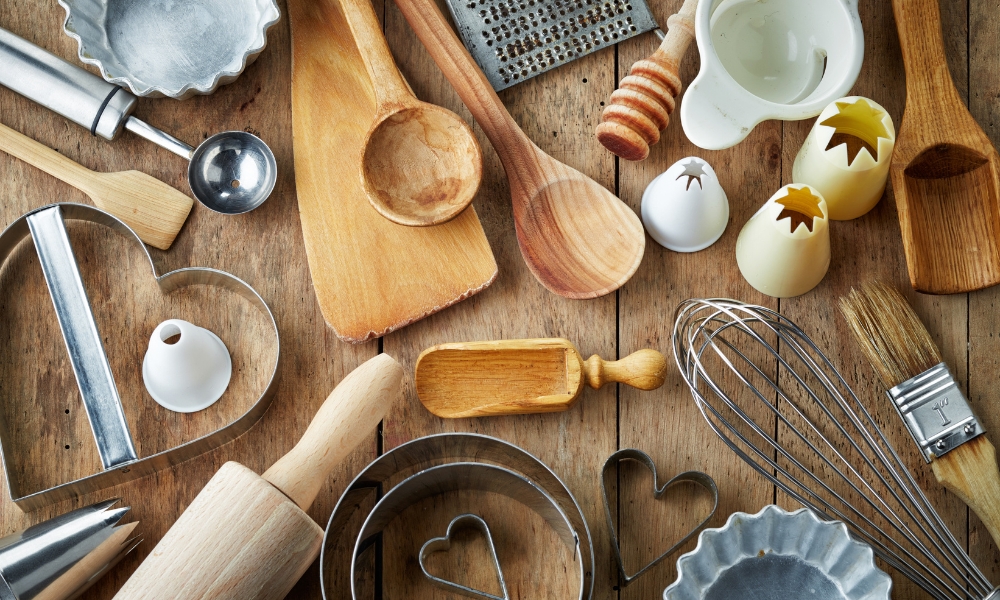Cooking utensils are essential tools in any kitchen, designed to aid in the preparation, cooking, and serving of food. These utensils range from basic items like knives, spoons, and spatulas to more specialized equipment such as whisks, peelers, and tongs. Each cooking utensil serves a specific function, ensuring that tasks like chopping, stirring, and flipping can be performed efficiently and safely. The right set of cooking pot can significantly enhance a cook’s ability to create delicious and well-prepared meals, making them indispensable in both home kitchens and professional culinary environments. Understanding what cooking pot are and their various uses is fundamental for anyone interested in the culinary arts.
What Is The Most Essential Cooking Utensil?
Among the myriad of cooking utensils available, the most essential is arguably the chef’s knife. This versatile tool is crucial for a wide range of tasks, from chopping vegetables and slicing meat to mincing herbs and crushing garlic. A high-quality chef’s knife can significantly improve the ease and efficiency of food preparation, making it a staple in every kitchen. Its sharp blade and ergonomic design allow for precise cuts and reduce the risk of accidents, highlighting the importance of investing in a reliable, well-crafted knife.
Importance Of Cooking Utensils In The Kitchen
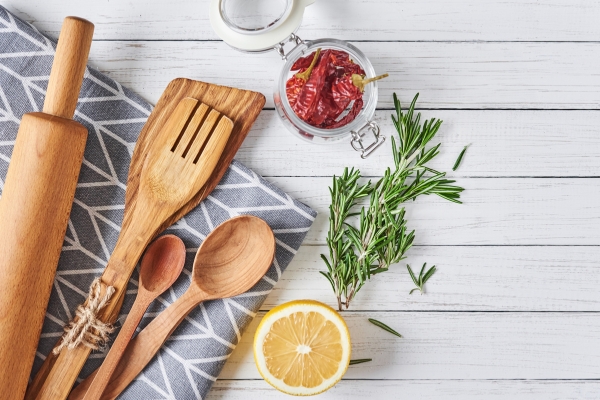
The importance of cooking pot in the kitchen cannot be overstated. These tools not only make food preparation more efficient but also ensure consistency and safety. Proper utensils help in measuring ingredients accurately, mixing components thoroughly, and cooking food to the correct temperature, which is vital for both flavor and health. Additionally, using the right utensils can prevent damage to cookware and reduce the risk of injury. Ultimately, a well-equipped kitchen with appropriate cooking pot enables cooks to explore a wide range of recipes and techniques, enhancing their culinary skills and enjoyment of the cooking process.
Types Of Cooking Utensils
Basic Cooking Utensils
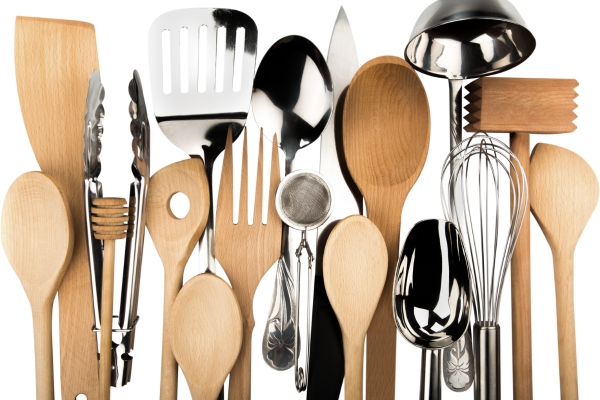
1. Spoons
Spoons are fundamental kitchen utensils used for stirring, mixing, serving, and measuring ingredients. They come in various forms, including wooden spoons, which are ideal for stirring hot dishes without damaging cookware; slotted spoons, perfect for draining liquids; and measuring spoons, essential for precise ingredient measurement in baking and cooking. Their versatility makes them indispensable in both home and professional kitchens.
2. Spatulas
Spatulas are another basic yet crucial utensil in the kitchen. They come in different types, such as rubber spatulas for scraping bowls and jars, metal spatulas for flipping and turning food on grills or pans, and offset spatulas for spreading icing or batter evenly. Spatulas help ensure that food is handled gently and efficiently, preventing waste and maintaining the integrity of dishes.
3. Knives
Knives are perhaps the most important utensils in any kitchen. A well-equipped kitchen typically includes a variety of knives, such as chef’s knives, paring knives, serrated knives, and utility knives. Each type serves a specific purpose: chef’s knives are versatile for most cutting tasks, paring knives are excellent for intricate work, serrated knives are ideal for slicing bread and tomatoes, and utility knives fill in the gaps for miscellaneous tasks. High-quality knives are essential for safe and precise cutting, chopping, and slicing, making them a cornerstone of any culinary toolkit.
Specialized Cooking Utensils
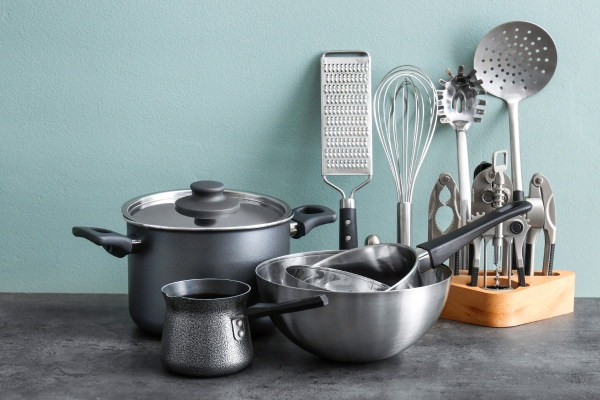
1. Peelers
Peelers are specialized tools designed to remove the outer skin of fruits and vegetables with ease and precision. They come in various styles, including straight peelers, Y-shaped peelers, and serrated peelers. Straight peelers are great for everyday peeling tasks, Y-shaped peelers offer better control and are ideal for larger produce, while serrated peelers can handle softer fruits and vegetables without squishing them. Peelers save time and reduce waste, making them a valuable addition to any kitchen.
2. Graters
Graters are essential for shredding and grating foods such as cheese, vegetables, citrus zest, and spices. They come in different types, including box graters, which offer multiple grating surfaces for different textures; microplane graters, perfect for finely grating zest, garlic, and hard cheeses; and rotary graters, which provide a safer, more efficient grating experience. Graters enhance the texture and flavor of dishes by providing finely shredded ingredients that integrate seamlessly into recipes.
3. Whisks
Whisks are versatile utensils used for blending ingredients, incorporating air into mixtures, and achieving smooth, lump-free textures. There are several types of whisks, including balloon whisks, which are ideal for whipping cream and egg whites; flat whisks, which are great for making sauces and gravies; and spiral whisks, designed for reaching into the corners of pots and pans. Whisks are indispensable for tasks that require aeration and thorough mixing, ensuring consistent and high-quality results in both baking and cooking.
Measurement Utensils
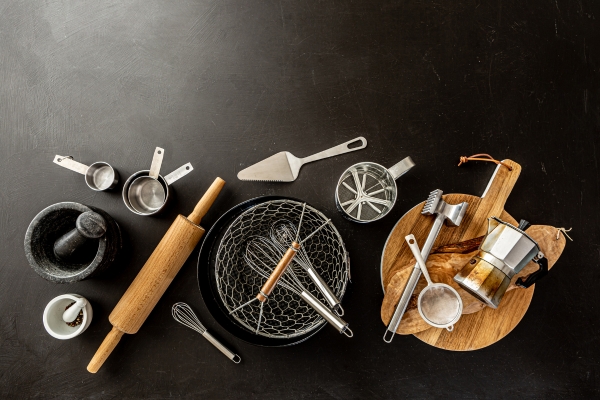
Measurement utensils are critical tools in the kitchen, ensuring that ingredients are used in the correct proportions for consistent and successful culinary results. Common measurement pots include measuring cups, used for both liquid and dry ingredients, measuring spoons for smaller quantities, and kitchen scales for precise weight measurements. These pots help maintain accuracy in recipes, which is especially important in baking where precise measurements can make or break a dish.
Mixing Utensils
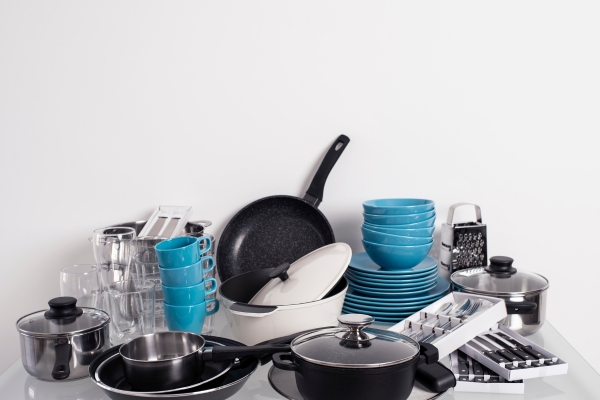
Mixing utensils are essential for combining ingredients thoroughly and efficiently. These include mixing bowls, which come in various sizes and materials such as stainless steel, glass, and plastic; wooden spoons, ideal for mixing doughs and batters; and electric mixers, which save time and effort for larger batches. Proper mixing ensures that ingredients are evenly distributed, contributing to the texture and flavor of the final product.
Cooking Utensils For Baking
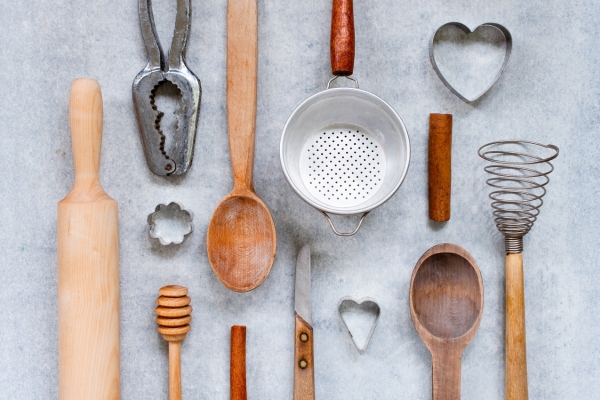
1. Rolling Pins
Rolling pins are indispensable for flattening and shaping dough. They come in different types, including traditional wooden rolling pins with handles, French rolling pins that are tapered at the ends, and silicone rolling pins which are non-stick. A good rolling pin allows for even dough thickness, which is crucial for baking consistency.
2. Baking Pans
Baking pans are essential for holding and shaping baked goods during the cooking process. They come in various shapes and sizes, such as round cake pans, loaf pans, muffin tins, and cookie sheets. Each type of pan is designed for specific recipes, ensuring even heat distribution and proper baking. High-quality baking pans are typically made from materials like aluminum or non-stick coatings, which prevent sticking and ensure easy release.
3. Pastry Brushes
Pastry brushes are small, versatile tools used to apply glazes, egg washes, and butter to baked goods. They come in natural bristle and silicone varieties. Natural bristle brushes are great for applying delicate glazes, while silicone brushes are more durable and easier to clean. Pastry brushes help add a finishing touch to pastries, ensuring they have a beautiful, shiny appearance and enhanced flavor.
Materials of Cooking Utensils

Cooking utensils are crafted from a variety of materials, each offering unique advantages in terms of durability, heat resistance, and maintenance. Common materials include stainless steel, silicone, wood, plastic, and ceramic. Stainless steel pots are durable and resistant to rust, making them suitable for a wide range of cooking tasks. Silicone pot are heat-resistant and non-stick, ideal for use with delicate cookware and baking. Wooden utensils are gentle on cookware and provide a natural aesthetic, while plastic pot are lightweight and easy to clean. Ceramic utensils are stylish and often feature decorative designs, though they may be more prone to chipping or breaking.
What Is the Best Way to Store Cooking Utensils?
Proper storage of cooking utensils is essential for maintaining their quality and prolonging their lifespan. The best way to store cooking utensils is to keep them organized and easily accessible. Consider the following tips:
- Use a utensil holder: Invest in a utensil holder or crock to keep cooking utensils upright and within reach on the countertop. Choose a holder with compartments or dividers to keep pot separated and prevent them from tangling.
- Drawer organizers: If countertop space is limited, store pot in drawers using organizers or dividers. Arrange utensils neatly to maximize space and prevent clutter.
- Hang utensils: Install hooks or racks on the wall or backsplash to hang cooking pot, freeing up countertop and drawer space. This method also allows utensils to air dry after washing, reducing the risk of bacterial growth.
- Group similar utensils: Organize pot by type or function to streamline meal preparation. Keep frequently used utensils within easy reach and less commonly used ones in a designated storage area.
- Consider utensil material: Store pots made of different materials separately to prevent damage. For example, keep metal utensils away from delicate cookware to avoid scratching, and store wooden pot in a dry area to prevent warping or mold growth.
Conclusion
Cooking utensils are indispensable tools in the kitchen, designed to assist with a wide range of food preparation tasks. From basic utensils like spoons and spatulas to specialized tools for baking and mixing, each utensil plays a vital role in creating delicious meals. By understanding the materials used in cooking utensils. And adopting proper storage practices, home cooks and professional chefs can maximize the efficiency and longevity of their culinary tools. Investing in high-quality utensils and maintaining them properly ensures a well-equipped kitchen ready for any culinary challenge.
